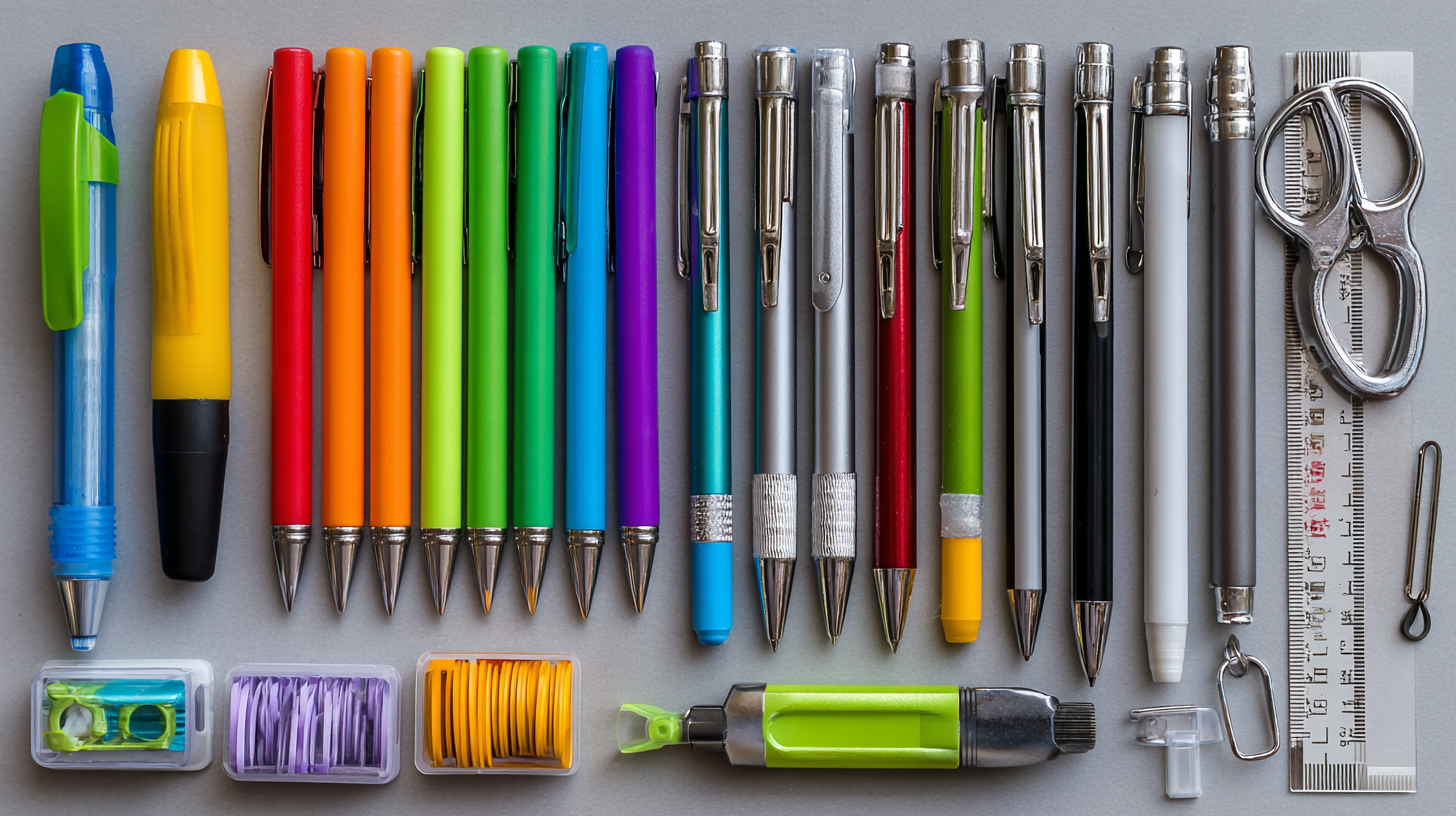In an ever-evolving work environment, staying ahead of market trends in office supplies is crucial for businesses looking to enhance productivity and streamline operations. As we approach 2025, the demand for innovative and efficient office supplies is expected to surge, driven by advancements in technology and shifting workplace dynamics. This guide delves into the key trends shaping the future of office supplies, highlighting essential tools and resources that will redefine how we work.

From eco-friendly materials to smart organizational tools, understanding these trends will empower companies to make informed purchasing decisions that not only meet functional needs but also foster a more engaged and sustainable work culture. Join us as we explore the exciting developments that lie ahead in the realm of office supplies.
As we move towards 2025, the landscape of office supplies is being dramatically transformed by the rise of smart technologies. These innovations are not just about convenience; they are tailored to enhance workplace efficiency, foster collaboration, and create environments that respond to the evolving needs of employees. The integration of smart office supplies, such as AI-powered tools and smart furniture, is redefining how spaces are utilized, enabling a more fluid and dynamic work experience.
The shift towards smart workplaces is becoming increasingly essential, especially with the ongoing changes in work patterns prompted by the pandemic. Companies are reimagining their office designs to accommodate hybrid models, where remote work intersects with in-office presence. With advanced technologies, organizations are able to monitor space usage, adjust lighting and climate control, and streamline workflows. This approach not only enhances comfort but also drives productivity by catering to the specific preferences of employees, showcasing a future where technology and human needs merge seamlessly for a better workplace experience.

As we approach 2025, the green movement within the office supplies sector continues to gain momentum, influenced by heightened consumer awareness and rigorous environmental regulations. A report by GreenBiz highlights that 71% of global consumers are willing to pay a premium for sustainable products, underscoring the importance of eco-friendly office supplies. Additionally, many companies are pledging to incorporate sustainable materials, with a projected 50% of office supplies being made from recycled or biodegradable materials by 2025.
The Environmental Protection Tax in Vietnam serves as a noteworthy example of governmental efforts to promote sustainability. Starting in 2025, this tax aims to discourage the use of non-eco-friendly materials while supporting businesses that adopt greener practices. Similarly, initiatives around the world, like Bangkok’s green office initiative, reflect a broader trend where businesses are incentivized to reconsider their supply chains and materials usage. With the rising demand for sustainable packaging and products, the office supplies market is poised to transform, emphasizing sustainability as a critical component of its future landscape.
As remote work becomes a staple in the modern work environment, the demand for office supplies is experiencing a significant shift. According to a report by Global Workplace Analytics, remote work has increased by 173% since the pandemic began, fundamentally altering how businesses and employees view office supplies. In 2021 alone, the global office supplies market was valued at approximately $56 billion, and this figure is projected to grow at a CAGR of 3.5% through 2025. The need for flexible, home-oriented office supplies is driving innovation, as companies focus on ergonomic and multifunctional products.
Furthermore, the rise of hybrid work models has led to a diversification in product offerings. Research from Statista indicates that 51% of remote workers prioritize comfort and productivity in their home office setups, prompting suppliers to adapt their inventories accordingly. This trend has resulted in increased sales of ergonomic chairs, sit-stand desks, and specialized tech accessories designed to improve the remote work experience. The evolving landscape of office supplies thus reflects not only the operational needs of businesses but also the preferences of a workforce that now operates in a dual environment of home and office.

As we delve into the future of office supplies, one crucial aspect that cannot be overlooked is the quality assurance in manufacturing, particularly with Chinese products. China's manufacturing prowess has positioned it as a global leader in various industries, making it essential for businesses to trust the products that come from this region. With advances in technology, manufacturers are increasingly adopting stricter quality control measures, thereby ensuring that their products meet international standards.
When sourcing office supplies, it's vital to prioritize suppliers who have transparent quality assurance processes. Look for manufacturers that provide detailed certifications and audits, showcasing their commitment to quality. Additionally, consider requesting samples before making bulk purchases; this allows you to assess the product quality firsthand before relying on it for your office needs.
Moreover, building strong relationships with suppliers can enhance trust. Engage with them regularly, ask questions about their production processes, and seek insights into their quality control practices. This proactive approach not only fosters transparency but also ensures that you stay informed about the latest trends and innovations in office supplies as we move toward 2025.
As we delve into the future of office supplies, it's crucial to understand the complexities of global supply chains that will shape the market by 2025. The COVID-19 pandemic revealed vulnerabilities within these chains, prompting a re-evaluation of sourcing strategies. Companies are increasingly prioritizing resilience, seeking local suppliers and diversifying their procurement sources to mitigate risks. This trend presents significant opportunities for businesses willing to invest in regional partnerships and sustainable practices, which can not only stabilize supply lines but also enhance their brand value.
However, navigating these global supply chains also comes with its own set of challenges. Geopolitical tensions, fluctuating transportation costs, and stringent regulations can disrupt even the most carefully laid plans. To thrive in this evolving landscape, businesses must adopt agile strategies, leveraging technology for real-time tracking and data analysis. By doing so, they can anticipate disruptions, adjust their operations swiftly, and maintain service continuity. In this interconnected world, those who stay ahead of the curve will emerge as leaders in the office supplies market, turning challenges into opportunities for innovation and growth.
